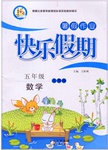题目内容
—Here is a ticket for you, Sir.
— I wasn’t speeding.
- A.what’s the matter?
- B.I’m sorry.
- C.Thank you.
- D.My pleasure.
试题分析:考查交际用语:A. what’s the matter? 怎么了?B. I’m sorry.抱歉
C. Thank you.谢谢D. My pleasure.不用谢,句意:这是罚单,先生。--怎么了?我没有超速啊。选A。
考点:考查交际用语
点评:交际用语的考查要根据上下文的语境进行,对于一些重要的交际用语要加强识记和理解。本题的四个选项都是常考的交际用语,一定要加强识记。

 一诺书业暑假作业快乐假期云南美术出版社系列答案
一诺书业暑假作业快乐假期云南美术出版社系列答案For travellers who want to experience some of the history and mystery of the ancient world, here is a list of cool destinations for your next holiday.
Angkor Wat, Cambodia
Built in the 12th century, Angkor Wat (meaning “capital monastery”) was a temple in the ancient Khmer capital city of Angkor. It is Cambodia’s best-known tourist attraction and is famed for its beautiful architecture and reliefs. You’ll need at least three days to fully discover the delights of this magnificent site.
Machu Picchu, Peru
Machu Picchu was built high in the Andes Mountains of South America by the Inca in the 15th century. Although well preserved its exact purpose is unknown. It is famous throughout the world not only for its incredible design but also for the natural beauty that surrounds it. Give yourself a week to explore this magnificent site.
Stonehenge, England
The entire Stonehenge site was constructed over thousands of years. But why and how it was built remains a mystery. As the weather can be pretty bleak in winter and the crowds huge in summer, we suggest autumn should be the best time to visit these monster rocks.
Pompeii, Italy
When Mount Vesuvius erupted in 79 A.D., Pompeii was buried under many layers of ash, preserving the city exactly as it was when the volcano erupted. Because so many objects were preserved, scientists and visitors are able to better understand daily life in the ancient Roman Empire.
【小题1】Why may people want to visit Machu Picchu?
| A.To climb the Andes Mountains. | B.To discover how it was built. |
| C.To explore both history and nature. | D.To learn to speak Spanish. |
| A.Summer. | B.Spring. | C.Winter. | D.Autumn. |
| A.Pompeii. | B.Stonehenge. | C.Ankor Wat. | D.Machu Picchu. |
| A.In a travel magazine. | B.In a scientific journal. |
| C.In a history textbook. | D.In an adventure novel. |
